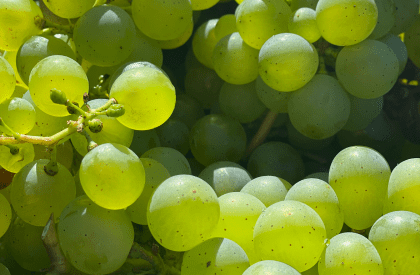-
Colombian Coffee
Colombian Coffee
-
Brazilian Coffee
Brazilian Coffee
-
Pineapple
Pineapple
-
Banana
Banana
-
Olive Oil
Olive Oil
-
Passion Fruit
Passion Fruit
-
Gulupa
Gulupa
-
Granadilla
Granadilla
-
Pitahaya
Pitahaya
-
Gooseberry
Gooseberry
-
Grape
Grape
-
Soursop
Soursop
-
Lulo
Lulo
-
Mango
Mango
-
Tamarillo
Tamarillo
Our Brochures
Contact Us
Social Media


- Scientific Name: Vitis vinifera (common grape vine)
- Botanical Family: Vitaceae
- General Description:
Grapes are small, round or oval fruits that grow in clusters on woody vines. - They are known for their sweet and juicy flesh and are used for making various products, including wine, raisins, and grape juice.
Fruit Characteristics
- Size: Grapes vary in size depending on the variety, with diameters typically ranging from 1 to 2 centimeters (0.4 to 0.8 inches).
- Color: Grapes come in various colors, including green, red, black, and purple, depending on the grape variety.
- Texture: The skin of grapes can be smooth or slightly textured, while the flesh is juicy and typically contains seeds, although seedless varieties are also available.
- Taste: Grapes are sweet or sweet-tart, with flavor profiles that vary among grape varieties.
common usses
- Grapes are commonly consumed fresh as a snack or dessert.
- They are used in various culinary preparations, including salads, fruit platters, and desserts like tarts and pies.
- Grapes are a key ingredient in winemaking, producing a wide variety of wines around the world.
- Raisins, which are dried grapes, are used in baking, cooking, and as a snack.
- Grapes are celebrated for their delicious taste, versatility, and use in the production of wine. They are enjoyed in various forms and are appreciated for their nutritional value and potential health benefits.
Some of the places
where this fruit is grown
- France: France is famous for its wine production, and regions like Bordeaux, Burgundy, Champagne, and the Rhône Valley are renowned for their grape cultivation.
- Italy: Italy is another major wine-producing country, with regions like Tuscany, Piedmont, and Sicily known for their grapevine cultivation.
- Spain: Spain is famous for its vineyards in regions such as La Rioja, Catalonia, and Andalusia.
- United States: The U.S. is a significant producer of grapes, with California being the leading state for grape cultivation. Napa Valley and Sonoma County are famous wine regions in California.
- Argentina: Argentina is known for its Malbec grapes, mainly grown in the Mendoza region.
- Chile: Chile has a growing wine industry, with regions like Maipo Valley and Casablanca Valley producing a variety of grapes.
- Australia: Australia has wine regions like Barossa Valley, Margaret River, and Hunter Valley, where grapes are cultivated.
- South Africa: South Africa’s Western Cape, including Stellenbosch and Franschhoek, is known for its vineyards.
- New Zealand: New Zealand, particularly the Marlborough region, is famous for its Sauvignon Blanc grapes.
- Greece: Greece has a long history of grape cultivation, with regions like the Peloponnese and Crete known for their vineyards.
- Germany: Germany’s Rhine and Moselle valleys are famous for their Riesling grapes.
- Portugal: Portugal’s Douro Valley is renowned for its Port wine production, made from grape varieties like Touriga Nacional.
- China: China has seen significant growth in its grape industry, with regions like Ningxia and Shandong becoming major grape-producing areas.
- India: India’s Nashik region in Maharashtra is known for its grape cultivation, particularly for table grapes.
- Mexico: Mexico’s Baja California, specifically the Valle de Guadalupe, is gaining recognition for its wine production.
Nutritional Properties (per 100 grams)
grape
- Calories: Approximately 69 kcal
- Carbohydrates: About 18 grams
- Sugars: Approximately 15 grams
- Dietary Fiber: About 0.9 grams
- Protein: About 0.7 grams
- Fats: Almost negligible
- Vitamins: Grapes are a good source of vitamin C and vitamin K.
- Minerals: They contain minerals such as potassium and calcium.
